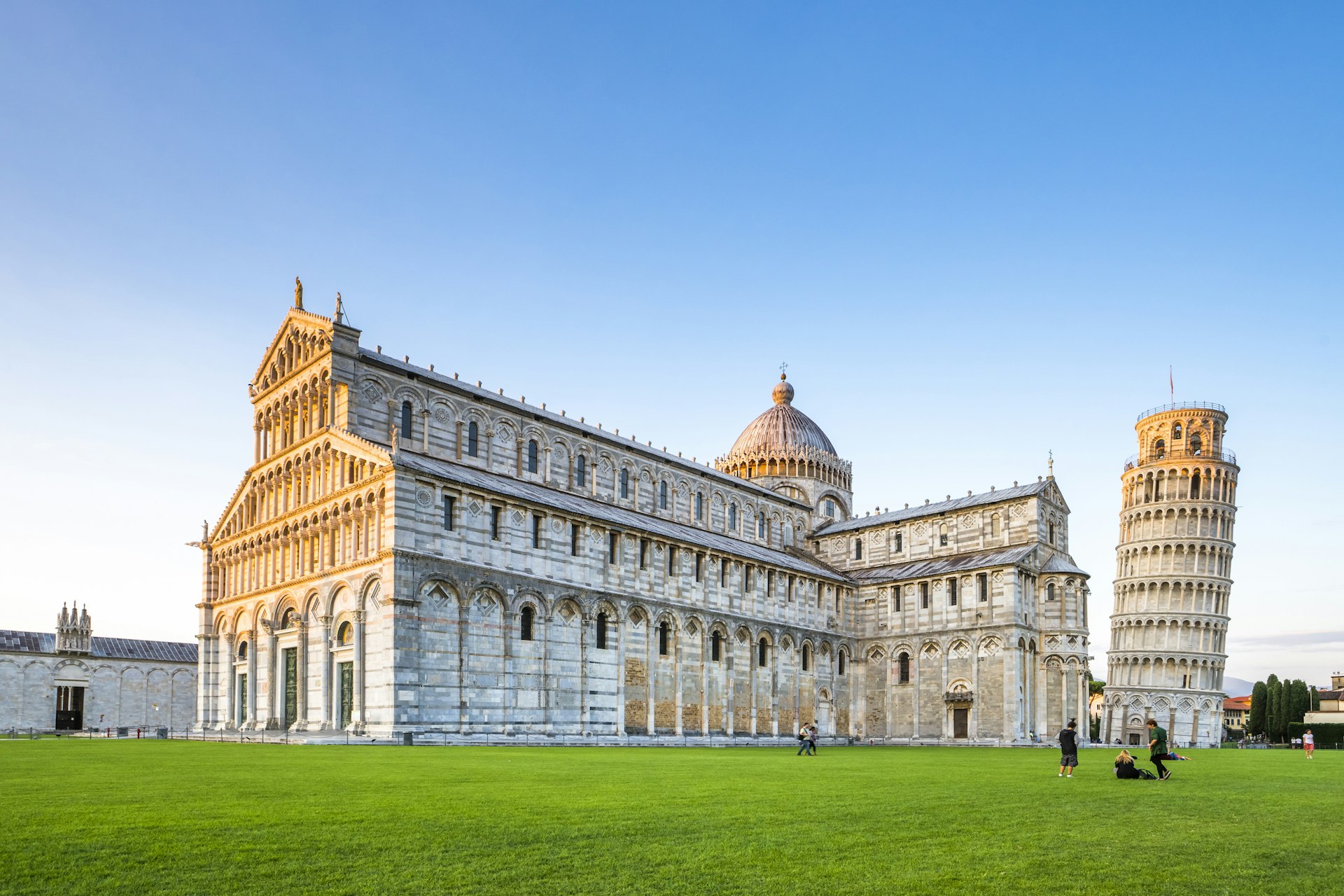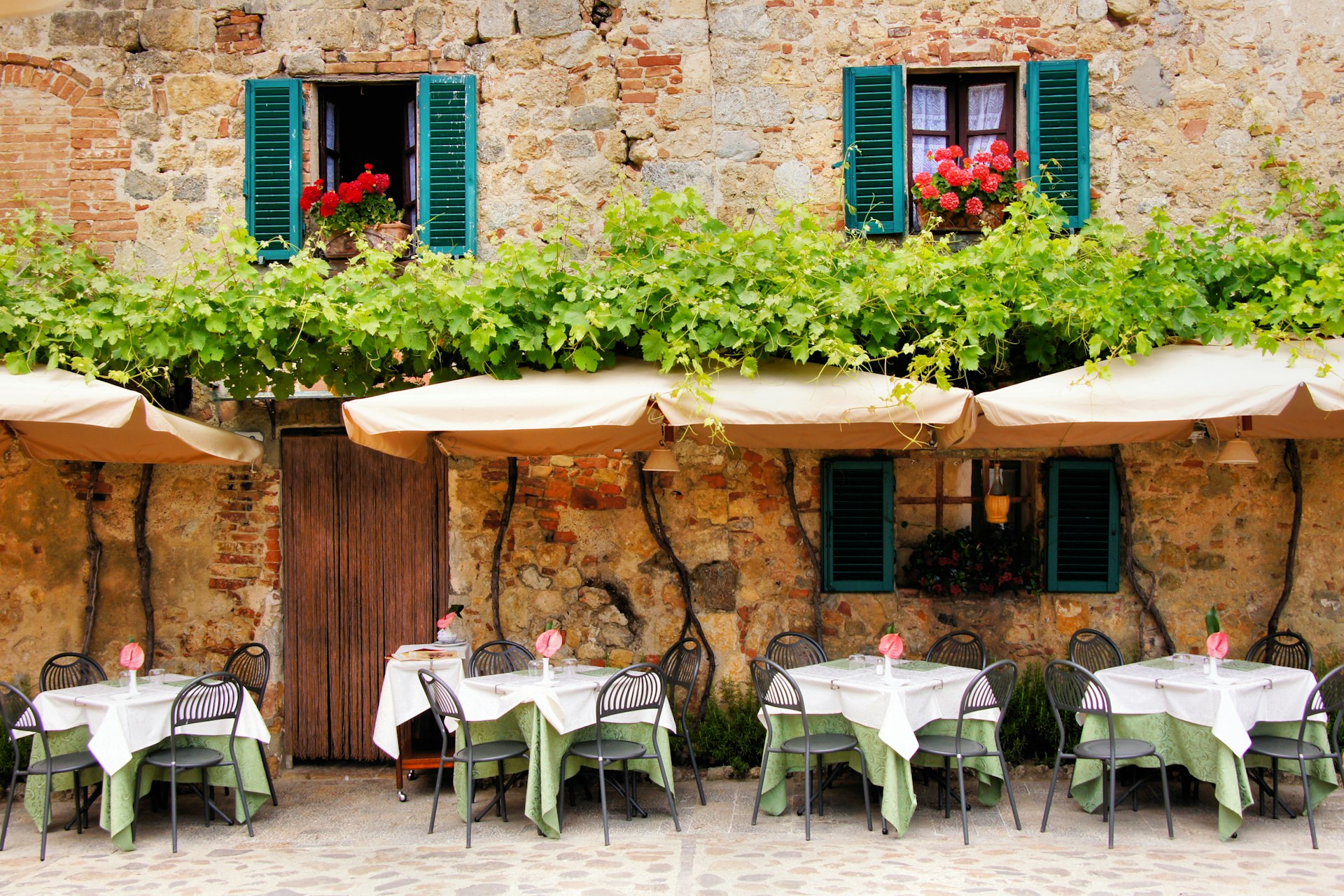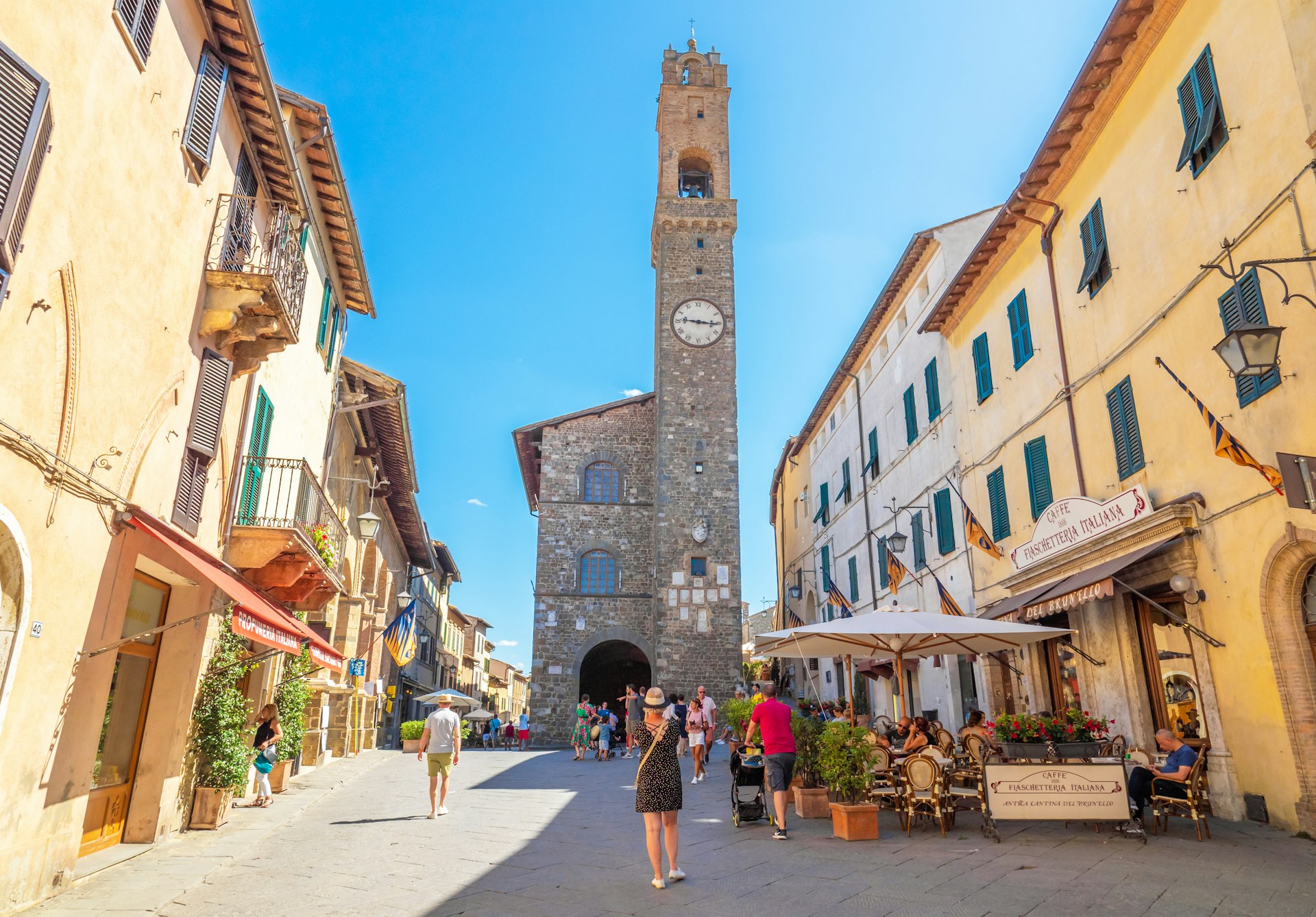Tuscany escapes easy definition. The Apennines – Italy’s mountainous spine – slope into vineyard-covered rolling hills, which in turn fade into the Mediterranean coast. This blend of diverse landscapes is home to the remains of millennia-old Etruscan settlements, isolated hamlets whose stone-built bell towers date back to the Middle Ages, and grand art cities whose heritage is invaluable.
With sarcasm being the local language, Tuscans may not seem to take such wealth too seriously, but understanding the many different facets of this rich Central Italian region can feel overwhelming. Florence tends to grab most of the attention, but it’s worth exploring beyond the Renaissance city to discover the unexpected treasures of this rich Central Italian region.
Whether you are planning an art-filled tour of medieval cities, a road trip through the twisting countryside roads of Val d’Orcia, or a multi-day hike along the Via Francigena pilgrim route, here is how to figure it all out.
When should I go to Tuscany?
Late spring to early autumn is when most people visit Tuscany. It’s easy to understand why – days get longer and warmer, the countryside comes to life, outdoor dining opportunities abound, and festivals happen all around. Florence runs its Calcio Storico tournament and the region’s largest music festival, Firenze Rocks; Siena has its traditional Palio horse race; Pistoia hosts its Blues Festival; and Cortona its International Photography Festival. And there’s more.
July and August are peak holiday season. It’s when most Italians go on holiday and temperatures get scorching – days surpassing 35ºC (95ºF) have become the norm at this time of the year. Visiting in the middle of summer (especially in August) means finding beaches clogged and cities empty. Prices are significantly higher in popular destinations and booking accommodation in advance is well advised.
The two shoulder seasons – either between late April and June, or in September and October – typically offer the best compromise between good weather, flows of people, and prices. Come in spring and you’ll see the countryside in full bloom; visit in autumn to catch the wine harvest – and related events like the Expo del Chianti Classico in September – and truffle fairs such as San Miniato’s White Truffle Exhibition in November.
Tourism slows down during winter, especially after the Christmas holidays. The coast goes into hibernation, and many countryside hotels shut down until spring. Cities offer the chance to visit famous museums without crowds – often at reduced prices, as is the case for the Uffizi in Florence – and deals on accommodation are more easily found.
How much time do I need to visit Tuscany?
With so much to see and do, it’s easy to feel overwhelmed in Tuscany. There is no perfect length of stay when it comes to exploring the region – whether you feel drawn to art, food, or the outdoors, you’ll likely leave looking forward to a second trip.
With walkable cities well-connected by public transport, a five-day stay will allow you time to tour Florence’s main sights and then jump on the train for a day trip in Siena, Lucca, or Arezzo. If you’d rather drive yourself, you can explore Val d’Orcia in about three days or plan a week-long road trip starting from Pisa which will take you through the rural towns that dot the hilly interior.
Slow travelers can also walk the path of the Tuscan section of the ancient Via Francigena – the pilgrim route that connected the Canterbury with Rome during the Middle Ages – crossing 38 municipalities over the course of 16 (or more) days.
Is it easy to get in and around Tuscany?
Tuscany has two international airports, Florence and Pisa. Pisa’s Galileo Galilei (PSA) airport is serviced by many low-cost airlines and has twice the passenger traffic of Firenze’s Amerigo Vespucci (FLR) airport. The two cities are connected with a direct railway, which takes just over an hour to travel. Besides flying, it is possible to reach Florence with high-speed trains departing from many major Italian cities, including Rome, Naples, Milan, Bologna and Venice.
Tuscany’s rail network spans across 181 stations, providing an affordable means of exploring the region. You can buy regional train tickets conveniently through trenitalia.com or at any station. Remember to validate paper tickets purchased at the station before boarding the train. Trains do not run to many of the smaller towns and while buses are available, the best way of moving around rural areas is by car. Major rental companies, such as Budget, Sixt, Hertz, operate around Tuscany, with the largest offer available in Florence and Pisa.
Where to go in Tuscany
Tuscany is divided into ten provinces and people are famously proud of the defining characteristics of each. The days of warring city states are long gone, but by speaking to locals you will learn that food, dialects, and traditions can still differ widely from city to city – here is what to expect.
Florence
Renowned for its incomparable Renaissance heritage, Florence often feels like an open-air museum. The Tuscan capital is far from large, but its compact historic core packs grandiose cathedrals – such as Santa Maria del Fiore topped by Brunelleschi’s cupola, Santa Croce and Santa Maria Novella – opulent palaces, and some of the region’s best art museums. The Galleria degli Uffizi, one of Italy’s most visited museums, tends to be high on everyone’s list, but there are plenty more options for art lovers including Michelangelo’s masterpieces in the Cappelle Medicee and the Galleria dell’Accademia, and the Medici’s heritage at Palazzo Pitti and Palazzo Vecchio.
Outside the thick stone walls of its captivating galleries, Florence boasts a cosmopolitan character and a vibrant culinary scene. Roam its markets in San Lorenzo or Santo Spirito, explore crafts and design workshops in the Oltrarno, and then fuel up with a stuffed schiacciata (Tuscan flatbread) at Forno Becagli or Sapori Toscani. Before dinner, get a negroni at the newly opened Caffè Giacosa, inspired by the bar where Count Camillo Negroni is said to have invented the cocktail, then hit one of the city’s many trattorias (informal restaurant) for dinner.

The Chianti region
The core of Tuscany’s most famous wine region stretches between Florence and Siena, offering as many tasting opportunities as you can imagine. The Strada Statale 222, better known as Via Chiantigiana, runs through the whole of the Chianti region north to south, twisting among vineyard-covered hills and medieval castles, making for an ideal road trip.
Antinori nel Chianti Classico, on the outskirts of Florence, is perhaps the region’s best-known winery – its futuristic headquarters in were completed in 2012, but the Antinori family has been in the wine business for over six hundred years, since Giovanni di Piero Antinori joined the Arte Fiorentina dei Vinattieri (Florentine Winemakers’ Guild) in 1385. Many other wineries are found along the way, including the excellent boutique winery Capanelle and the imposing Castello di Brolio of the Ricasoli winery.
Siena
One of Tuscany’s most beautiful squares – Piazza del Campo – marks the center of Siena, Florence’s eternal rival that emerged during the Middle Ages as a progressive city-state where art and architecture flourished. Each year, the semi-circular piazza commonly known as “Il Campo” hosts the Palio, one of the most heartfelt events of the year in which Siena’s neighborhoods compete in a horse race with thousands of people watching.
Siena is worth spending a few days in, but if you are short on time make sure to enter its Duomo – Giovanni and Nicola Pisano, Pinturicchio, Michelangelo, Donatello and Gian Lorenzo Bernini all contributed to making the cathedral an unchallenged masterpiece. Don’t miss the floor, a composition of 56 marble panels forming a mosaic with scenes from the Old Testament, created by various artists between the 14th and the 19th centuries.
Val d’Orcia
The postcard image of Tuscany you have in mind likely comes from Val d’Orcia, the Unesco-inscribed region where cypress-lined roads lead to dreamy farm houses surrounded by hay bales that look like they are just about to roll down the hills. Films such as Anthony Minghella’s The English Patient and Ridley Scott’s The Gladiator have used Val d’Orcia as their backdrop and road tripping this region guarantees exceptional views all around.
Many charming towns dot this rural area. The construction of Pienza was commissioned to architect Bernardo Rossellino, a student of Leon Battista Alberti, by Enea Silvio Piccolomini, a humanist born who would become Pope Pius II in 1458, as the “ideal Renaissance city” and still stands as one of the main settlements in the Val d’Orcia. Not far you can find the thermal waters of Bagno Vignoni and the fortress of Montalcino, globally revered for its prized Brunello wine.

Pisa
Pisa is often reduced to its leaning tower but there is much more to see, both inside and outside the Unesco-listed Piazza dei Miracoli. In the Middle Ages Pisa was one of Italy’s most powerful maritime republics, and signs of its wealth are still part of this city which is now home of one of Tuscany’s most important universities.
The monumental cemetery of Piazza dei Miracoli, established in 1277 to house the remains of the city’s elite, houses one of the city’s most important frescoes, the recently restored Il Trionfo della Morte (The Triumph of Death) by Buonamico Buffalmacco. Beyond Piazza dei Miracoli you find the new Navi di Pisa Museum which traces the history of the city’s relationship with the sea and features parts of over 800 ships excavated in Pisa’s surroundings.
The islands
Distant from the museums and the cathedrals of the region’s art cities are the seven islands of the Tuscan archipelago, ideally positioned for a Mediterranean escape after an overload of culture. The islands – Elba, Giglio, Montecristo, Capraia, Pianosa, Giannutri and Gorgona – come to life during summer and it’s worth booking accommodation well in advance if you plan to visit in the high season. Elba is the largest of the seven, offering both great beaches and hiking opportunities along its Grande Traversata Elbana (GTE, Elba’s Great Crossing) trail.

Lucca
The 12m tall walls surrounding Lucca’s historic center, built between 1513 and 1650 and stretching for four kilometers across eleven bastions, are among Europe’s best preserved fortifications and function as the city’s green lung with large parks and tree-lined paths offering great views over Lucca’s heart.
This charming city makes for an ideal day trip from Florence – inside the fortress walls, you’ll find Lucca’s Cattedrale di San Martino, where Gothic and Romanesque elements blend to form the structure housing one of Tuscany’s most precious artifacts, the celebrated Volto Santo (holy face) crucifix, believed to be one of the oldest wooden sculptures in Europe.
In summer the city hosts its Lucca Summer Festival, held in Piazza Napoleone. Over the years, artists such as Elton John, The Scorpions, Green Day, and Sting have played in the city. Another important event is the Lucca Comics & Games, one of Europe’s largest comics festivals held each year in autumn.
The Apuan Alps
The Parco Naturale delle Alpi Apuane stretches across two areas of northeastern Tuscany that few people take the time to visit, Lunigiana and Garfagnana. The rugged Apuan Alps take their name from their resemblance to the actual Alps, although they are much smaller in size with peaks under 2,000 meters.
Historically these mountains have been the main source of Carrara marble, extracted since Roman times in the quarries surrounding the city of Carrara. Today, much of the area is a protected nature reserve marked by a vast network of hiking trails. The hamlets of Castelnuovo di Garfagnana and Barga are good spots to start your exploration of the region – either by relaxing around the Lago di Vagli or committing to a multi-day hike along the Via Vandelli, connecting Massa to Modena.
My favorite thing to do in Tuscany
In early October the legendary Eroica cycling race attracts thousands of athletes to the town of Gaiole in Chianti to compete on vintage bikes on the white roads that criss-cross the region. It’s a grueling challenge – participants take on average 15 hours to complete the 212km itinerary. Luckily, you don’t have to join the race to explore Chianti on two wheels.
Rent a gravel bike or an electric mountain bike at Il Biciclettaio in Gaiole in Chianti, and follow the same itinerary of the Eroica athletes over three to five days. Cut through fields of vineyards and make room to visit Siena, Buonconvento, Montalcino, Asciano, and Brolio, fueling up with plates of pici pasta along the way.

How much money do I need in Tuscany?
Costs in Tuscany can vary widely depending on where and when you go. Prices tend to be inflated in areas that attract large tourism flows like central Florence and Siena and skyrocket along the coast during summer months. Still, it is possible to visit on a budget by relying on public transport and looking for accommodation deals outside peak summer months.
A guide to daily costs in Tuscany
- Basic double room: 80€
- Espresso coffee: 1.20€
- Car rental: 65€
- A stuffed schiacciata sandwich: 5€
- Dinner for two with a bottle of local wine: €70
- Museum ticket: 10€ to 20€
- Petrol: 1.80€/liter
- City parking: 2€/hour
- Aperitivo cocktail: 7€
- Glass of wine: 5€
- Train ticket from Florence to Pisa 8.90€
